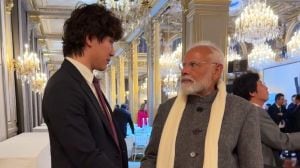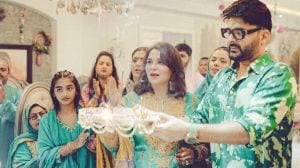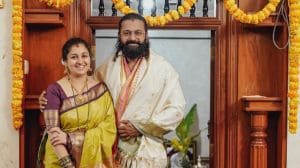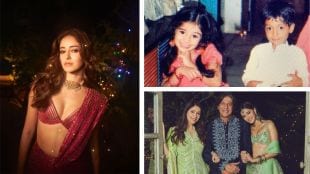With chartbusters like rang barse in the background and gulaal in the air, it’s time of the year when we scream, ‘bura na mano, Holi hai..!’. But this is not the only way the festival of colors is celebrated in India. We Indians believe in unity in diversity and the same applies to the festivals. With a beautiful blend of different cultures and traditions, Holi is celebrated with uniqueness in each Indian state. Here’s how Holi is celebrated in different states of India.
Rang Panchami – Maharashtra
The festival is celebrated after the sunset on Purnima by burning Holika symbolizing the victory of good over evil. The very next day, Phalgun Krushnapaksh Panchami is called ‘Rangpachami’. On this day people sprinkle color, gulaal, and water on each other. Gorging on the state’s special delicacy called ‘Puran Poli’ is a must here. The festival is popular among the fisherfolk where they celebrate by dancing, singing and preparing delicious delicacies as an offering to god.
Lathmar Holi – Uttar Pradesh
It is a unique and fun way to celebrate Holi. In Mathura, Barsana and Vrindavan regions women chase men and beat them up with lathis (sticks) as a part of the tradition. Therefore it is called the Lathmar Holi.
The tradition dates back to the Dwaparyug when Lord Krishna came to meet his beloved Radha and mischievously teased her and her friends. The women of the village to take revenge, chased him away with lathis. Hence to keep the tradition alive, every year men from Nandgaon visit Barsana to be welcomed by sticks. Men try to escape and Women chase them with sticks
Hola Mohalla – Punjab
Celebrated by Nihang Sikhs a day after the Holi festival, Hola Mohalla is a unique style of celebration started by Sikh guru Guru Gobind Singh in 1701. Also known as Warrior Holi, the day is celebrated by exhibiting martial arts, kushti, reciting poems and followed by the usual color Holi in the evening. The guru started the tradition of poetry contests and mock battles and since then it spread from Anandpur Sahib to Kiratpur Sahib.
Shigmo – Goa
The festival is celebrated by organizing parades of traditional folk and street dances. Boats are made decorated with religious and regional mythology themes. Shigmo is celebrated as a carnival of folk dances and songs. It has two forms of celebration: Dhakto Shigmo and Vhadlo Shigmo meaning small and big respectively. Dhakto Shigmo is celebrated by rural population, farmers and labor class, while Vhadlo Shigmo is celebrated by everyone else.
Royal Holi – Udaipur
The name itself depicts the way of celebration in the city of kingdoms. The Royal celebration by the Mewar’s royal family is picturesque. The Holi bonfire is lighted by the current custodian of the Mewar dynasty. It is followed by the colorful and fancy procession that consists of horses and royal bands.
Dol Jatra – Bengal
Bengal celebrates Holi in a religious way as a tribute to Lord Krishna. The idol or image of Goddess Radha and Lord Krishna are placed in a palanquin decorated with flowers, leaves, and clothes. Devotees swing the palanquin in the procession, dancing and singing songs. Men spray colors and water on the devotees.
Phaguwa – Bihar
Holi in Bihar is known for the consumption of ‘bhang’. People light the Holika pyre on the evening of Phalgun Poornima, to get rid of evil spirits and end conflicts by meeting each other. The next day Holi is played with colors, water, and folk songs.
Yaosang –Manipur
The five-day celebration called ‘Yawol Shang’ is the biggest and colorful festival of Manipur. The festival is a tribute to Manipur god ‘Pakhangba’. After the sunset, the festival begins with the burning of hut tradition called ‘Yaosang Mei Thaba’ and is later followed by children visiting every home to seek monetary donation called ‘nakatheng’. On the second day, the performance of local bands is organized in temples. On the second and third day, girls seek a monetary donation from friends and relatives. While the last two-days are celebrated with colors and water.
Manjul Kuli – Kerala
Known as Manjul Kuli, Holi celebration in Kerala is a peaceful one. On the first-day people visit the temple, while on the second-day people spray colored water containing turmeric on each other and dance on traditional folk songs.









